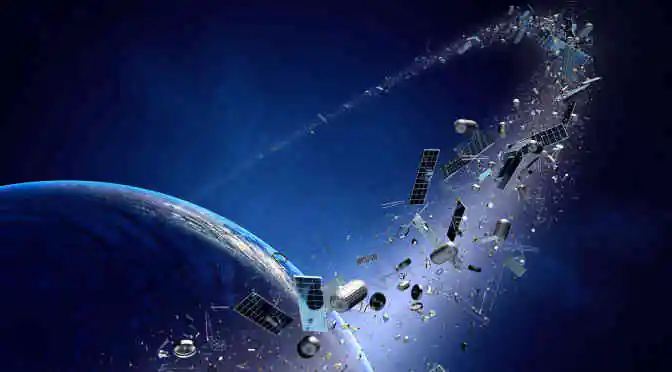Space. Quite unlike its name however, the limitless expanse that stretches above planet earth is littered with junk that alludes to mankind’s efforts to master this final frontier. Space debris comprises primarily of discarded satellites, rocket parts and other expendables that result from a standard space launch attempt. Space debris removal is a flourishing business, considering mankind’s consistent foray into space in the last several decades and incrementing need to protect strategic installations in this dark void.
The global space debris monitoring and removal market is populated by a few multinational and regional suppliers that offer a wide portfolio of products and services. Players such as Airbus, ASTROSCALE, Boeing, Lockheed Martin, and RSC Energia offer staunch competition in this sphere, with the need for R&D followed by actual excursions into space accounting for a tremendous input of money, resources and time.
What factors are driving this specialty into the future?
Basically, the need for space debris monitoring and removal arose out of the increasing number of satellites being hoisted into specified orbits around earth by an ever-expanding club of space faring nations. Satellites and other strategic installations in space are of course investments worth millions of dollars and space junk poses a very real threat to their optimal operation. In the coming years, the number of such installations will increment and the need for space debris removal will gain even more prominence.
Space tourism, a conceptual treasure trove, involves ferrying ordinary citizens into the expanse of space to allow them the experiences that only an accomplished astronaut can enjoy currently. However, with space debris that range from mere inches to several meters blasting at supersonic speeds along these planned excursion routes, the proposition of space tourism seems infinitely risky. Thus, while companies like SpaceX and even NASA will work out the chinks in the theoretical concepts that impede space tourism, vendors indulging in space debris removal will help clear up the field for these forthcoming tours.
Additionally, there are ground-based radars that assess collisional threats for spacecraft, and advances in spatial environment concepts, powerful ideas that will fuel the need for space debris removal in the coming future. Both these details are explained with examples in the comprehensive market research report from Technavio that addresses the space debris problem and how vendors can ensure productivity and profits out of the incumbent conditions.
Combing through the competition : What’s the cheat code?
Technavio’s market insights report pegs the space debris monitoring and removal market to grow at an encouraging CAGR through the next five years, 2017-2021. However, this specialty industry constitutes just 1.04% of the larger global space market, and the active players represent a super specific group that are ideally also involved in the aforementioned parent industry. Herein, the threat amounting to the substitution of present day space debris removal methods is low, probability of new- fully equipped competitors entering the fray is minimal and importantly, the bargaining power of the buyers is substantially low in light of the limited options available to them. Thus, the onus on the part of the vendor is to create a comprehensive arsenal of associated services and products, intense networking and lobbying to breach through the limiters and avail the concerned opportunities, all the while keeping costs and timelines in the lower spectrum. Sounds like a challenge? It surely is.



